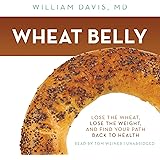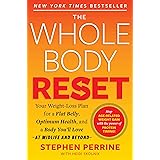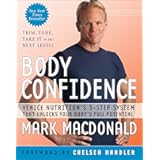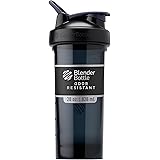Embarking on a weight loss journey is frequently initiated with a surge of motivation. However, this initial enthusiasm can quickly be overshadowed by a sense of overwhelming complexity. Questions often arise regarding appropriate dietary choices, effective exercise routines, and the overall commencement of such a significant endeavor. The comprehensive guide provided below, which complements the insights shared in the video above, is designed to demystify the process. It aims to furnish foundational weight loss tips for beginners, facilitating a more structured and sustainable approach to achieving health and wellness objectives.
Achieving Sustainable Weight Loss: Foundational Strategies for Beginners
Navigating the initial phases of weight loss can present numerous challenges. Consequently, establishing a robust framework of understanding and practical techniques is paramount. This content is curated to expand upon the valuable advice presented in the accompanying video, offering a deeper dive into key principles that underpin successful and lasting body transformation.
Setting Realistic Goals: The Bedrock of Progress
Weight loss aspirations are frequently established with unrealistic expectations. This often leads to discouragement and potential self-sabotage when immediate, drastic results are not observed.
Rather, progress should be measured against achievable benchmarks. For instance, aiming for a consistent weight reduction of 1-2 pounds per week is generally considered both healthy and sustainable. Such a pace, while seemingly modest, accumulates significantly over time.
Furthermore, this approach fosters psychological resilience. It allows for the celebration of small victories, reinforcing positive behavioral patterns and preventing the ‘all-or-nothing’ mindset that often derails long-term efforts. The journey is comparable to constructing a building; a strong foundation ensures the structure’s integrity.
Embracing a Lifestyle Shift, Not a Temporary Diet
The term “diet” typically implies a temporary restriction. Conversely, sustainable weight loss is predicated upon an enduring transformation of daily habits and perspectives.
Temporary dietary restrictions often yield short-term results, followed by weight regain once previous eating patterns are resumed. This cycle, commonly termed “yo-yo dieting,” can be detrimental to both physical and mental well-being.
A lifestyle change integrates balanced nutrition and regular physical activity into one’s daily routine permanently. It necessitates a fundamental reevaluation of one’s relationship with food and movement. This holistic view ensures that healthy behaviors become second nature, much like a river carving its course through rock over millennia.
Incorporating Flexibility: The Role of “Cheat Days”
Rigid dietary adherence can lead to feelings of deprivation. This can ultimately trigger intense cravings and subsequent overeating episodes.
Strategic incorporation of “cheat days” or, more accurately, “flexible eating” periods, can be instrumental. This approach allows for the enjoyment of favored foods in moderation, mitigating the psychological burden of constant restriction.
Such flexibility fosters a healthier, more balanced relationship with food. It acknowledges that adherence to a healthy lifestyle does not necessitate perfection but rather consistent, mindful choices, akin to a meticulously planned investment portfolio that includes diverse assets.
The 80/20 Principle: Nutrition and Physical Activity Synergy
Weight loss is fundamentally a product of energy balance. A commonly cited guideline posits that eighty percent of weight loss success is attributed to dietary choices, with twenty percent stemming from physical activity.
This principle underscores the primacy of nutrition in achieving a caloric deficit, which is essential for fat loss. However, the twenty percent dedicated to exercise is equally vital, contributing to metabolic health, muscle preservation, and overall well-being.
Both components are inextricably linked; optimal outcomes are achieved when diet and exercise are synergistically managed. Consider a meticulously engineered machine where each part, though varying in size, is indispensable for its operation.
Nutritional Foundations: Fueling the Body for Weight Loss
A balanced intake of macronutrients (proteins, carbohydrates, fats) is crucial. Protein, in particular, promotes satiety and aids in muscle repair and growth, which is vital during weight reduction.
Focus should be placed on whole, unprocessed foods. These items typically offer higher nutritional density and fiber content, contributing to sustained energy levels and digestive health.
Furthermore, mindful eating practices, such as consuming meals slowly and paying attention to hunger cues, can prevent overconsumption. This awareness transforms eating from an automatic action into a conscious decision.
Optimizing Physical Activity: Cardio and Strength Integration
Physical activity is indispensable for enhancing metabolic rate and improving body composition. It also supports cardiovascular health and boosts mood.
While cardiovascular exercises like running or walking effectively burn calories, strength training is equally critical. It builds muscle mass, which is metabolically active tissue, meaning it burns more calories at rest.
A balanced regimen incorporating both cardio and resistance training is recommended. This approach helps prevent a “doughy” physique, fostering a lean, firm body composition, much like sculpting clay to achieve both shape and resilience.
The “Goal Fitness” application mentioned in the video serves as an accessible tool for tracking activity. Its utility in setting daily exercise targets makes it a valuable asset for maintaining consistency and monitoring progress.
Monitoring Progress and Cultivating a Positive Mindset
Effective weight loss necessitates consistent monitoring and a robust mental approach. This combination ensures sustained motivation and objective evaluation of efforts.
The scale, when utilized judiciously, serves as one metric of progress. Weighing oneself once weekly, ideally at the same time and under similar conditions, provides a more accurate trend than daily fluctuations.
It is important to understand that daily weight variations are commonplace. Factors such as hydration, sodium intake, and digestive contents significantly impact momentary readings, which should not be interpreted as definitive weight gain or loss.
Visual Validation: The Power of Progress Pictures
Body composition changes are often more evident visually than numerically. Therefore, weekly progress photographs are highly recommended.
These images provide objective documentation of physical transformations. They can reveal subtle shifts in body shape and muscle definition that may not be reflected on the scale.
Reviewing these comparisons over weeks or months can serve as a powerful motivational tool. It offers concrete evidence of effort, acting as a personal cheer squad during challenging phases, much like reviewing architectural blueprints to see a structure evolving from concept to reality.
Managing Environmental Temptations and Emotional Eating
Boredom or emotional states frequently trigger unnecessary eating. Consequently, identifying these triggers is a vital step in managing caloric intake.
Maintaining a busy schedule and engaging in distracting activities can effectively mitigate boredom-induced eating. Substituting unhealthy snacks with sugar-free gum or engaging in non-food related leisure activities offers viable alternatives.
Furthermore, managing the food environment at home is critical. Meal prepping ensures healthy options are readily available, minimizing the temptation to consume less nutritious, convenient foods often present in shared living spaces. This proactive strategy builds a personal fortress against dietary indiscretions.
Strategic Nutritional Adjustments for Enhanced Results
Beyond general healthy eating, certain strategic nutritional adjustments can accelerate weight loss and improve metabolic health. These considerations are often refined as individuals progress in their journey.
The Cornerstone of Health: Hydration
Water intake is an often-underestimated component of weight loss and general health. Adequate hydration supports metabolism, satiety, and various bodily functions.
Consuming water before, during, and after meals can induce a feeling of fullness. This naturally reduces the quantity of food consumed, contributing to a caloric deficit without feeling overly deprived.
While increased urination is a minor side effect, the overarching benefits for digestion, skin health, and energy levels are substantial. It is akin to ensuring a finely tuned engine receives the correct coolant for optimal performance.
Carbohydrate Management: A Potent Tool for Weight Loss
Carbohydrates, while essential, can be a significant factor in weight management. Refined carbohydrates, in particular, are rapidly converted into glucose, potentially leading to fat storage.
A strategic reduction in carbohydrate intake, especially from sources like bread, pasta, and sugary foods, can significantly impact weight loss. This is primarily due to a reduction in water retention, as carbohydrates bind with water in the body.
This adjustment often results in rapid initial weight loss, observed as quickly as four pounds in the first week, largely attributable to diminished water weight. Long-term, it encourages the body to utilize fat stores for energy. This adaptation represents a metabolic shift, recalibrating the body’s primary fuel source.
The journey of weight loss is multifaceted, encompassing nutritional vigilance, consistent physical activity, and a resilient mindset. By implementing these expert weight loss tips for beginners, a solid foundation is established for not only shedding excess weight but also cultivating a permanently healthy lifestyle.











